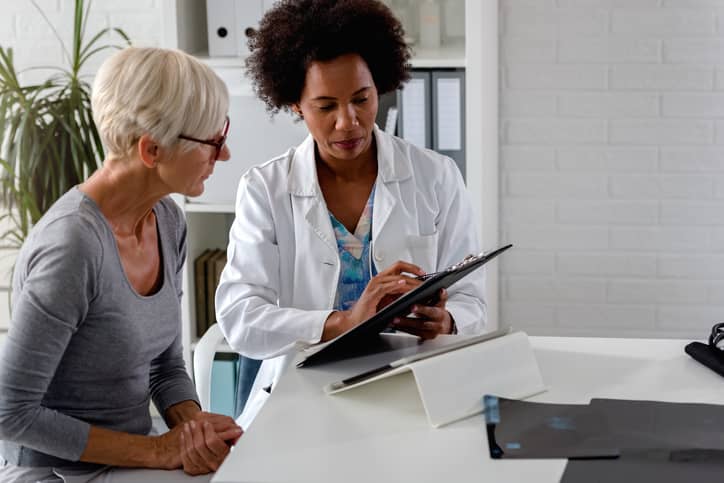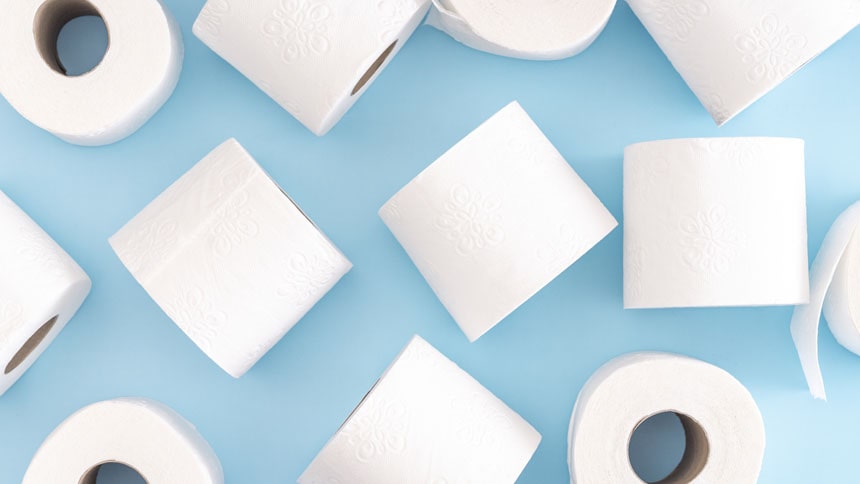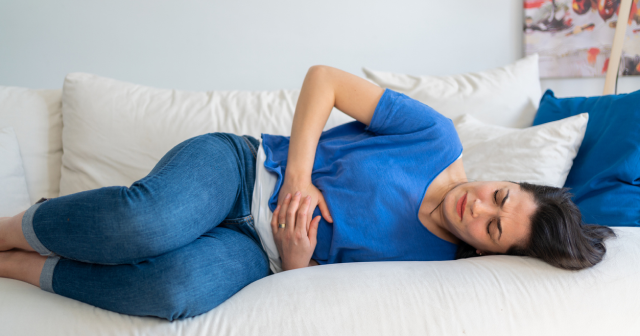Is pelvic pain a sign of menopause?
The perimenopause is the period of time leading up to the menopause. It’s when your hormone levels start to fall, but before your periods stop completely (menopause). During this time, these hormonal changes can cause pain and cramps in your lower tummy (abdomen) and pelvis.
This can also make abdominal pain linked to other conditions, such as irritable bowel syndrome (IBS), worse.
The amount of pain you have can vary, and different people will get different amounts and types of pain. It may feel like sharp cramps or a dull pain, and be constant or from time to time, and severe or mild.
Abdominal pain caused by hormonal changes usually settles down over time, but there are many other possible causes of pelvic pain, which may need treatment.
So read on to learn more, including when to see a doctor about menopause pain in the lower abdomen.
Common causes of lower abdomen and pelvic pain in menopause and perimenopause
During the perimenopause and menopause, as well as your changing hormones, there are lots of other possible causes of lower abdominal pain and pelvic pain. Here are some of the more common causes.
Periods
During the perimenopause, if you’re still having periods, you may find your period cramps and pain get worse, along with other common symptoms of premenstrual syndrome (PMS) such as breast tenderness and mood swings.
Period cramps are related to your levels of the hormones oestrogen and progesterone, and these change more than usual during the perimenopause.
When your oestrogen levels are high, your body makes more prostaglandins. These are hormones that make your womb (uterus) contract during your period – the higher your prostaglandin levels, the worse your cramps will be.
Pelvic floor problems
Your pelvic floor is a band of muscles that stretches from your pubic bone at the front of your pelvis to your tailbone (coccyx) at the back. It supports your pelvic organs and helps control your bladder and bowels.
During the perimenopause and menopause, your pelvic floor can become weaker. Sometimes, this can cause 1 or more of your pelvic organs to drop down (prolapse). This can lead to lower abdominal and pelvic discomfort, often with a feeling of heaviness or dragging.
Other symptoms of pelvic prolapse include being able to feel a lump inside your vagina, pain or numbness during sex and problems peeing – such as needing to pee more often or leaking a small amount of pee when you cough, sneeze or exercise (stress incontinence).
Discover the best pelvic floor exercises to help keep your pelvic floor strong.
Vaginal atrophy and urinary problems
Low levels of oestrogen in the perimenopause and menopause can cause the walls of your vagina to become thinner, drier, itchy and sore (inflamed). This is known as vaginal atrophy, or atrophic vaginitis. It can also mean your vagina expands less easily, which can make sex uncomfortable or painful.
Low oestrogen levels can also make the lining of your bladder and the tube that carries pee out of your body (urethra) thinner. This can lead to you needing to pee more often and a higher chance of urinary tract infections (UTIs), which can cause pelvic pain and discomfort, as well as burning or stinging when peeing.

Fibroids
Fibroids are small, non-cancerous (benign) growths that can develop in or around your womb (uterus) and cause abdominal or pelvic pressure or pain.
They’re quite common, but you’re more likely to get them before the menopause. They usually stop growing, shrink or go away postmenopause, although you can still get symptoms after you've stopped having periods.
Ovarian cysts
Ovarian cysts are fluid-filled sacs that can develop on your ovaries. They’re common, don’t usually cause any symptoms and often go away in a few months without treatment.
However, they can sometimes twist, burst or bleed, which can cause severe abdominal pain. This can happen before, during and after menopause.
Endometriosis
Endometriosis is a condition where the lining of your womb grows in other parts of your body, such as around your ovaries, fallopian tubes or bowel.
It can cause lower tummy and pelvic pain during the perimenopause and afterwards, as well as symptoms such as very painful periods, lower back pain, painful sex and pain when peeing or pooing.
Endometriosis tends to improve or happen rarely after menopause, because of lower levels of oestrogen. But it may come back if you take hormone replacement therapy (HRT).
Treatment for endometriosis can sometimes include a hysterectomy, where your womb and sometimes ovaries are removed. This can bring on what’s known as a surgical menopause.
Other possible causes of pelvic and low abdominal pain
- constipation is a common cause of abdominal pain. Other symptoms include bloating, pooing less than 3 times a week and hard poos that are difficult to pass
- urinary tract infections (UTIs) often cause pain in the lower abdomen, along with burning or stinging when peeing, difficulty peeing and frequent peeing, yellow discharge and strong-smelling or cloudy pee
- irritable bowel syndrome (IBS) causes abdominal pain and can become more common during the perimenopause. Symptoms tend to come and go and can also include wind, bloating and bouts of diarrhoea and/or constipation
- diverticulitis is a digestive condition that affects your large intestine and can cause pain and tenderness, usually in the lower left side of the abdomen, plus a high temperature, stomach cramps, diarrhoea and nausea
- inflammatory bowel disease (IBD) is a potentially serious cause of low abdominal pain. Symptoms include blood or mucus in your poo, a temperature (fever), unexpected weight loss, tiredness and joint pains and rashes
- appendicitis causes severe pain in the lower right abdomen, often starting as a mild discomfort around your belly button
- pelvic inflammatory disease is an infection that can cause constant, dull, lower abdominal pain along with a fever, vaginal discharge and sometimes painful sex
- ectopic pregnancy – if you’re still having periods, even infrequently, you can still get pregnant. If this is a possibility and you have a sudden, severe pain in your right or left lower abdomen, usually without vomiting or fever, it could be an ectopic pregnancy. This is when a fertilised egg implants itself outside of your womb, and needs urgent medical attention
- cancer – including ovarian cancer and bowel cancer. If you have pelvic and abdominal pain along with other symptoms such as weight loss, changes in your bowel habits, nausea or vomiting, blood in your poo, abdominal swelling or painful sex, talk to a doctor as soon as possible

When to see a doctor with menopause lower abdominal pain
You should call an ambulance or go to the emergency department if you have lower abdominal pain and:
- you’ve had an injury to your abdomen
- the pain is really bad
- you might have eaten something poisonous
- you’re being sick (vomiting) and it’s bright green, bloody, or looks like coffee grounds
- you’re vomiting and can’t keep any fluids down
- your tummy looks very swollen
- your poo looks very dark, like tar
- there’s a lot of blood in your poo or pee
- you haven’t pooed or farted all day
- you haven’t peed all day, or you’re suddenly unable to pee
- you feel very confused or sleepy
- you feel very unwell, you have a high temperature (fever), your heart is very fast, you feel dizzy or faint, or have any other signs of blood poisoning (sepsis)
- you have a very painful lump in your tummy or groin that can’t be pushed back in
- you’re pregnant and the pain is bad, you have heavy vaginal bleeding, you also have pain where your shoulder meets your arm, or you feel dizzy or faint
See a doctor within 24 hours if you have lower abdominal pain and:
- diarrhoea that lasts more than 7 days
- vomiting for over 2 days
- a fever
- pain in your back that’s just under your ribs
- you feel shaky or shivery
- urinary tract infection (UTI) symptoms that don’t improve after 2 days
- UTI symptoms and you have a penis, you’re older, frail or a child, or your symptoms come back
- unusual vaginal discharge, or you think you may have a sexually transmitted infection (STI)
See your doctor as soon as possible if you have lower abdominal pain and:
- vomiting
- it doesn’t go away, or keeps coming back
- you feel generally unwell
- changes to your periods
- any vaginal bleeding after the menopause
- blood in your poo or pee
- a change in your poo habits for more than a week (such as pooing more often with very runny poo)
- you’re tired a lot of the time
- you’re losing weight (and not trying to)
- your belly feels bloated and it doesn’t go away
- you’ve lost your appetite, or feel full quickly when eating
- you feel a lump in your tummy or groin
Make a routine appointment with your doctor if any menopause symptoms are causing you concern, including abdominal discomfort or pelvic pain. You may need some simple investigations to rule out other conditions, such as fibroids or endometriosis.
Treatment for lower abdominal pain during menopause and perimenopause
The treatment that’s suitable for you will depend on the cause of your pain.
Some types of lower abdominal pain, such as pain caused by changes in hormone levels, can be treated with simple painkillers such as paracetamol or ibuprofen. Speak to your pharmacist or doctor for guidance on how to safely get and use these medicines.
Some of the other causes of lower abdominal pain listed above may need other treatments, including other medication or treatment at a hospital. Visit the links to specific conditions for more details about treatment options.
Certain lifestyle changes can help reduce abdominal pain in the perimenopause. You could try avoiding caffeine and alcohol, as these can make menstrual cramps worse, limiting your salt intake to help reduce bloating, and exercising every day. Pain linked to periods can also be eased using a warm (not hot) water bottle on your tummy.
Eating plenty of fresh fruit, vegetables and fibre can help relieve constipation and help prevent other digestive problems.
If the perimenopause is causing symptoms that are bothering you, such as period problems, hot flushes, tiredness or mood swings, your doctor may suggest hormone replacement therapy (HRT). This can be very effective at helping reduce the symptoms of the perimenopause and menopause.
Your health questions answered
Can fallopian tubes cause pain after menopause?
 Answered by: Dr Roger Henderson
Answered by: Dr Roger HendersonEndometriosis can cause pain in the fallopian tubes at any age, including after the menopause. However, it’s more common before and up to the menopause, and often settles down postmenopause. If you have abdominal discomfort after the menopause, see your doctor.
Key takeaways
- lower abdominal pain is common, and is often mild and goes away on its own
- it can happen during the perimenopause and menopause because of changing hormone levels
- there are many other possible causes of pelvic and lower abdomen pain
- menopause-related lower abdominal pain can usually be treated with lifestyle changes, painkillers or medication, such as hormone replacement therapy (HRT)
- see a doctor if you have severe or unusual abdominal pain, or other symptoms







